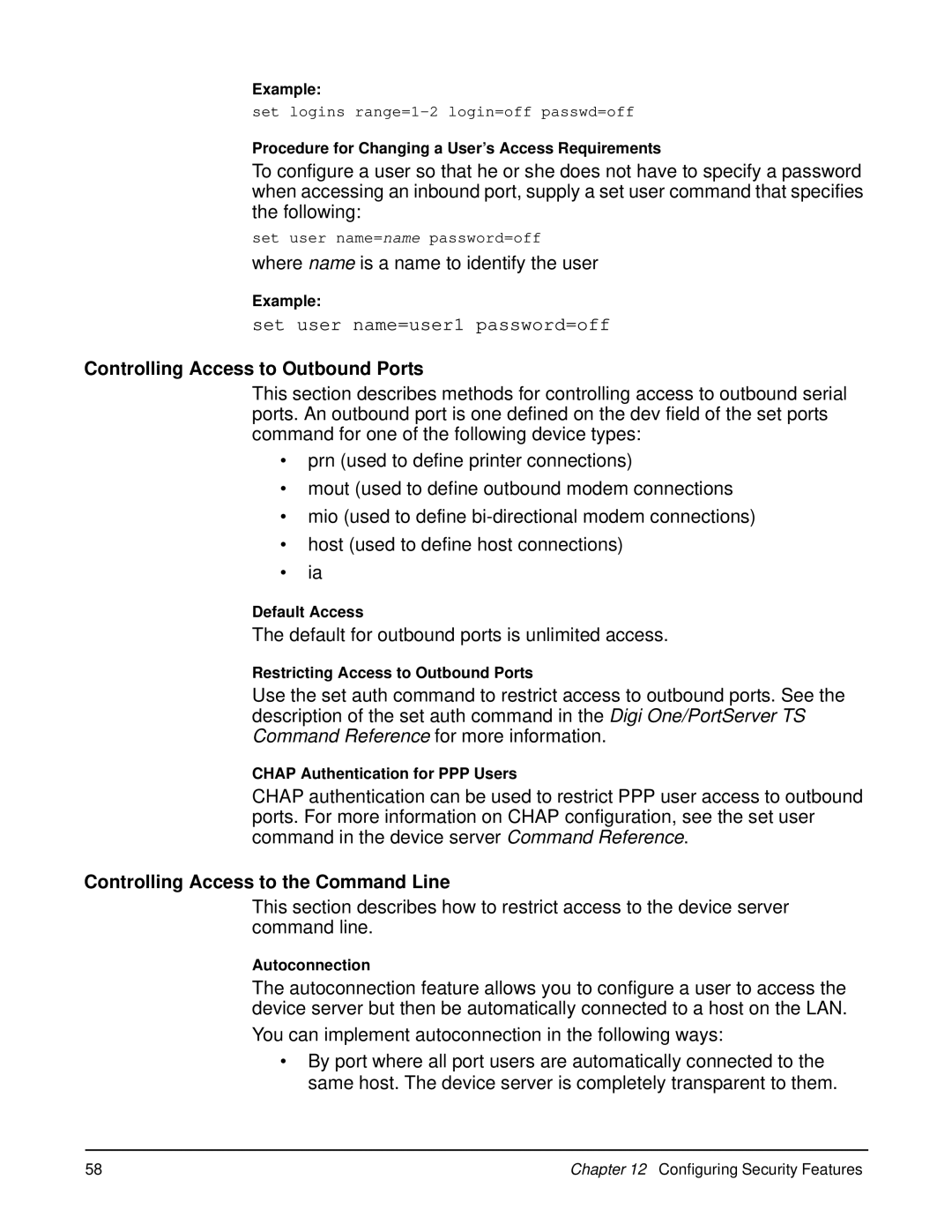Example:
set logins
Procedure for Changing a User’s Access Requirements
To configure a user so that he or she does not have to specify a password when accessing an inbound port, supply a set user command that specifies the following:
set user name=name password=off
where name is a name to identify the user
Example:
set user name=user1 password=off
Controlling Access to Outbound Ports
This section describes methods for controlling access to outbound serial ports. An outbound port is one defined on the dev field of the set ports command for one of the following device types:
•prn (used to define printer connections)
•mout (used to define outbound modem connections
•mio (used to define
•host (used to define host connections)
•ia
Default Access
The default for outbound ports is unlimited access.
Restricting Access to Outbound Ports
Use the set auth command to restrict access to outbound ports. See the description of the set auth command in the Digi One/PortServer TS Command Reference for more information.
CHAP Authentication for PPP Users
CHAP authentication can be used to restrict PPP user access to outbound ports. For more information on CHAP configuration, see the set user command in the device server Command Reference.
Controlling Access to the Command Line
This section describes how to restrict access to the device server command line.
Autoconnection
The autoconnection feature allows you to configure a user to access the device server but then be automatically connected to a host on the LAN.
You can implement autoconnection in the following ways:
•By port where all port users are automatically connected to the same host. The device server is completely transparent to them.
58 | Chapter 12 Configuring Security Features |
